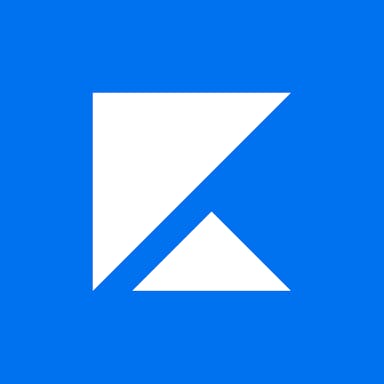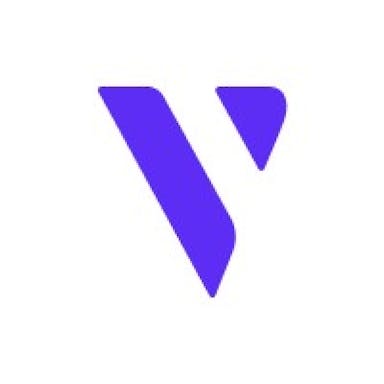Thesis
In 2023, there were an estimated 50 million content creators, such as YouTubers, podcasters, and bloggers, globally. For early creators, there were few ways to monetize, causing many to rely on sponsorship deals. Eventually, companies and creators started to find better ways to monetize their audience through methods they had greater control over, such as selling products and launching subscriptions for exclusive content. The creator economy was estimated to be worth $250 billion in 2023 and was projected to double to $480 billion by 2027, driven by the growth and increasing ability of creators to monetize on platforms like YouTube, Instagram, and TikTok.
Nevertheless, 77% of creators in 2021 still relied on brand deals for revenue. Over time, brand sponsorships have become harder to come by due to intense competition among creators. In addition, brands have become more demanding in their expectations around engagement metrics and viewer demographics that are out of creators’ control, while increasingly scripting creators’ content. Due to the competitiveness of the industry and the low payout from platforms, 48% of creators in a 2023 survey were found to earn $15K per year or less.
Kajabi provides tools for creators to directly monetize their audience through digital content and services. It describes itself as a “comprehensive creator platform” that is intended to give creators “full control over building their brand, owning their audience, and monetizing their expertise, content, and … communities.” Kajabi’s mission is to enable creators, who it calls “knowledge entrepreneurs”, to “achieve success online” by eliminating technology as a barrier.
Creators use Kajabi to create online courses, run coaching programs, and host online communities. As part of its platform, Kajabi offers a suite of marketing tools to create email marketing campaigns and sales funnels that come with pre-made templates. In addition, it provides an AI-driven photo and video editor to turn existing courses into social media content. It also provides AI chatbots that creators can use to support customers.
Founding Story
Kajabi was founded by Kenny Rueter (former CEO) and Travis Rosser in 2009. The idea originated when Rueter built a sprinkler toy for his kids that drew interest from other children in the neighborhood. He originally intended to sell it as a physical product, but then he realized it would be easier to sell instructions for creating the toy online.
However, the process of making an online course was complicated at the time, since people needed to hire developers to put courses online, which entailed hours of reinventing the wheel every time. This experience gave Rueter the idea to build a platform for such courses, and he was able to build a 6K-person waitlist for the product before releasing any code, which helped validate product-market fit.
Prior to founding Kajabi together, Rueter and Rosser had been friends since 1998 when they met at church. Early on in their relationship, they were creating apps together; as Rosser described in one interview: “We made things like, we made a Twitter scavenger hunt… called Find That Tweet.”
Because Rueter had worked as a software engineer, he began coding the first version of Kajabi which allowed users to host online courses. Meanwhile, Rosser contributed to the design of the site, leveraging his previous experience at Local.com, formally a publicly traded advertising business, as a web design manager.
From there, the business saw traction quickly. Rueter claims that the platform became a million-dollar ARR business overnight when the platform officially launched in October 2010. Over time, Rosser had trouble finding his pace as the company grew. As he later put it:
“There was a time when I think I started feeling like I wasn’t sure what I was doing at the company. You know, as a startup entrepreneur … you start hiring out different people. And pretty soon I had people doing all my tasks that I did before.”
This led to the co-founders often discussing the subject of Rosser’s place at the company and a rift started to form in their relationship.
In March 2018, Rosser filed a lawsuit against Rueter. Rosser stated in the lawsuit that Rueter interfered with his decision-making rights and withheld monetary distributions. Rosser ended up exiting the company in June 2018.
After raising $550 million from a growth equity round In May 2021, the company hired experienced executives to deal with the day-to-day operations of the company, which allowed Rueter to step down as CEO in August 2021 to serve as Executive Chairman.
Ahad Khan, Rueter’s replacement, was a former private equity investor and COO of Kajabi who doubled its revenue base during his tenure. Sean Kim (President and Chief Product Officer) joined Kajabi in February 2022, having previously served as Head of Product at TikTok and Amazon Prime. In addition, Teri Yu (Head of Product) joined in 2022 after her company Vibely was acquired by Kajabi and previously worked as a product manager at Asana.
Beyond this, the company has seen additional changes in its C-Suite in the 2020s. Brad Matthews was hired in 2022 as CMO and left the company in 2023. Mahesh Gurusawamy was promoted in 2022 as CTO and left in 2023. David Lennie was hired in 2022 as Chief Strategy & Data Officer and left in early 2024 to “take a career break.” Finally, in June 2024, Kajabi secured ex-Atlassian executive Cameron Deatsch as a member of the board.
Product
Kajabi allows creators to monetize their audience by creating courses, coaching sessions, and managing communities on its platform. Kajabi also gives users the ability to manage emails and communication, create websites, launch marketing funnels, design social media content, and manage payments. Kajabi also helps centralize marketing tools for creators.
Kajabi’s value proposition is that it integrates a multitude of functionalities needed by creators into one platform and is designed to be user-friendly. A big part of the platform’s goal is to reduce technological barriers for creators starting an online business.
Online Courses
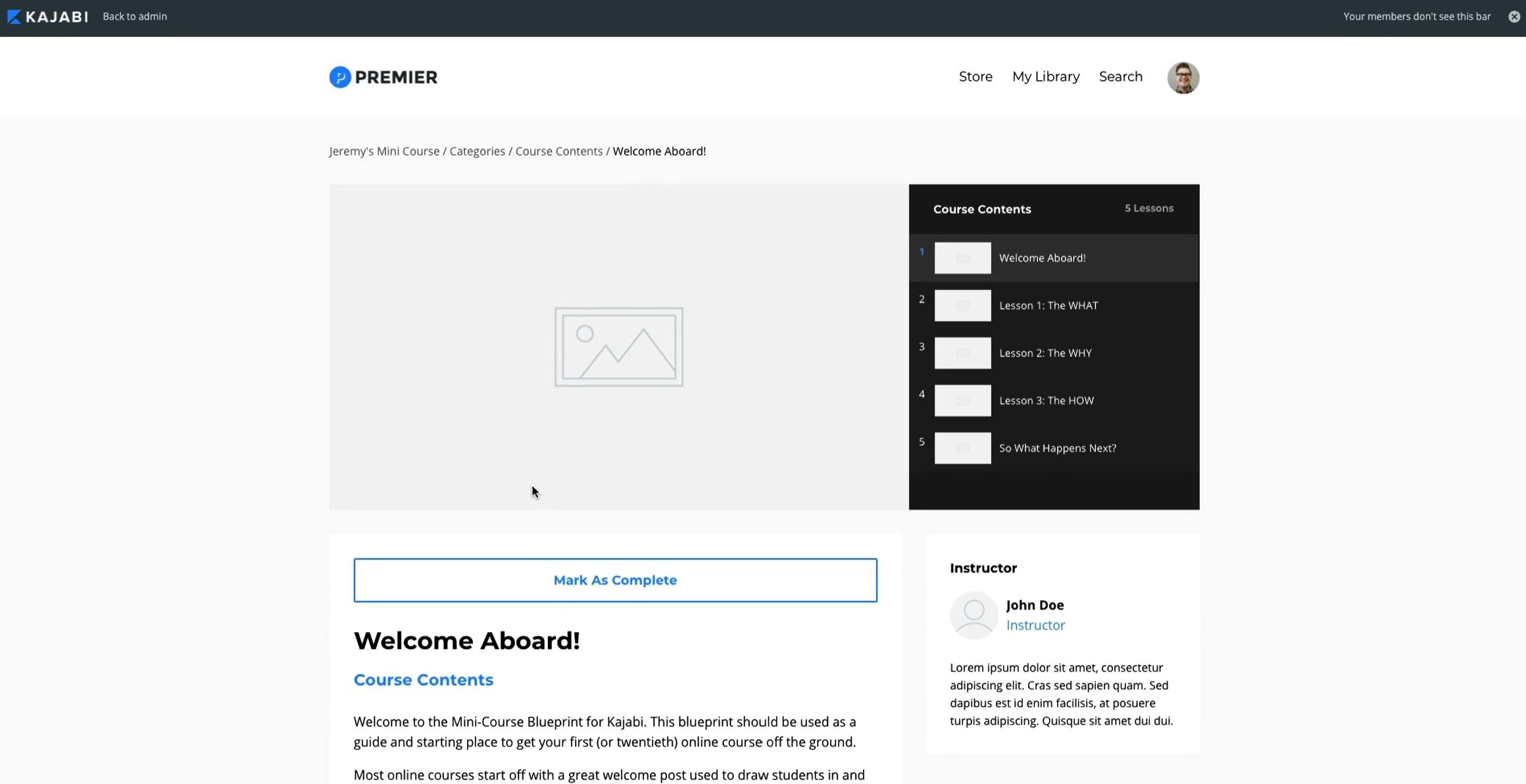
Source: Kajabi
Kajabi offers a comprehensive platform for creating, marketing, and selling online courses. It provides customizable templates, design tools, and integrations with Stripe and PayPal for payment processing. The platform also includes features like a mobile app, website and email integrations, marketing funnels, and analytics. Kajabi emphasizes user-friendly tools to help creators monetize their knowledge without needing advanced technical skills.
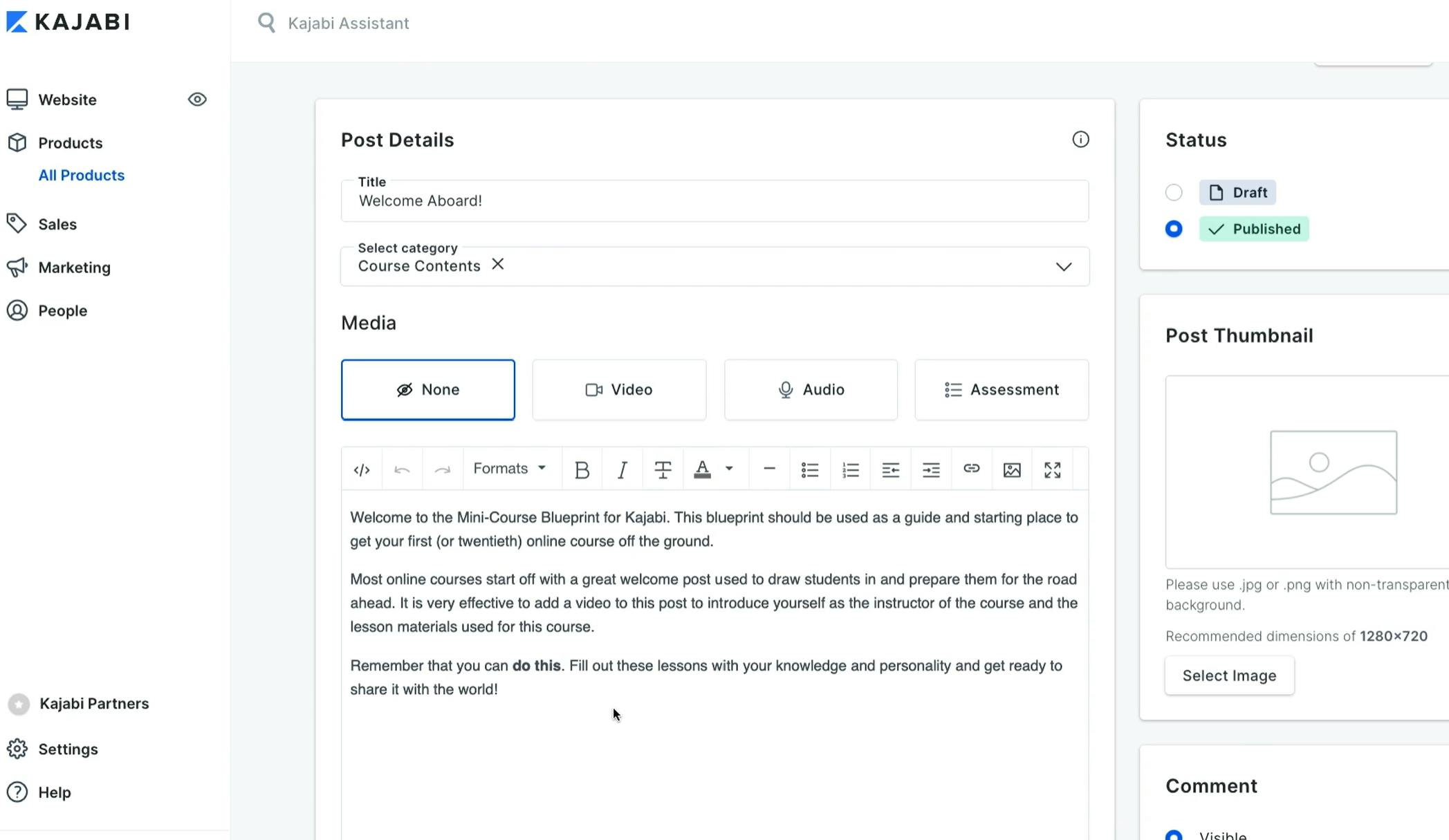
Source: Kajabi
For online courses, users create modules in order to place their videos and organize lessons. Kajabi offers templates for designs that cater to creators in different niches. Users can add text descriptions, audio, assessments, and downloadable files within each module.
Coaching

Source: Kajabi
Kajabi's coaching platform offers a solution for creating, managing, and growing a profitable coaching business. It includes tools for setting up coaching packages, scheduling meetings, processing payments, hosting live calls, and sending follow-up emails. The platform is designed to be user-friendly, with customizable templates and integration with tools like Google Calendar.
Sessions can be put in modules for better organization and to ensure that each session stays on topic. Coaches can natively organize resources, notes, and meeting agendas, and then email them to clients or place them in modules. Finally, it provides a way for coaches to track clients' progress from the backend, with data such as when they joined and how many sessions they’ve scheduled.
Podcasts

Source: Kajabi
Kajabi's podcast platform is intended to allow creators to easily start and manage podcasts, helping them build their brand and monetize their content. Features include publishing to multiple platforms, creating subscription-based or members-only podcasts, and integrating podcasts with other Kajabi tools for marketing and audience engagement. It's designed to be an easy-to-use solution to turn podcast listeners into paying customers while managing everything from one dashboard.
Memberships

Source: Kajabi
Kajabi's membership management software provides tools for creating and managing subscription-based communities. It offers customizable templates for building membership sites, automation features for managing members, and analytics to track performance metrics like churn rate and recurring revenue. The platform is intended to help creators generate consistent income through exclusive content and offers while maintaining direct communication with their audience.
Communities

Source: Kajabi
Kajabi's Communities feature allows creators to build and monetize online communities with tools like live video calls, real-time chat, challenges, and progress tracking. It features a newsfeed and the ability for creators to directly message those in the group. It also includes accountability tools, leaderboards, and the ability to host virtual events through live video sessions.
To foster a sense of community, creators can create “challenges” within the communities that can be rewarded with virtual recognition and prizes. The offering also integrates with other Kajabi products, providing a centralized hub for audiences to engage, network, and support one another.
Payments
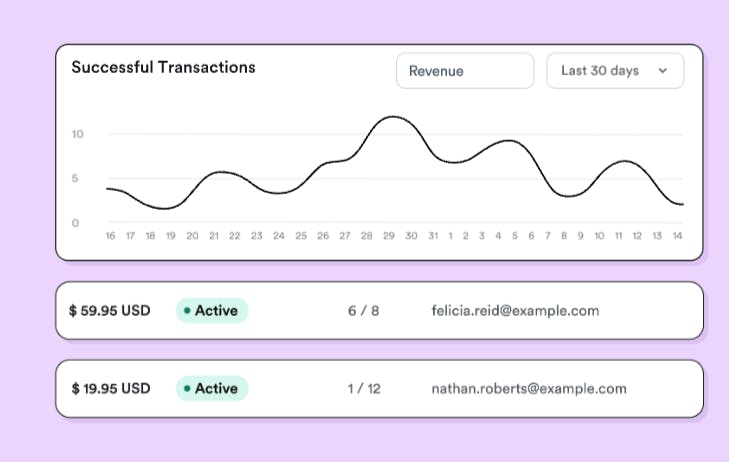
Source: Kajabi
Kajabi Payments is an integrated payment solution designed for creators and entrepreneurs. It allows users to manage payments directly within Kajabi, offering features like automatic tax calculations, flexible payment options (including Afterpay and Klarna), and integrations with tools like Xero and QuickBooks. The platform provides a unified dashboard for tracking transactions, generating receipts, and managing subscriptions. Kajabi Payments offers industry-standard processing fees (2.9% + $0.30 per transaction) without additional charges or third-party integrations.
Contacts
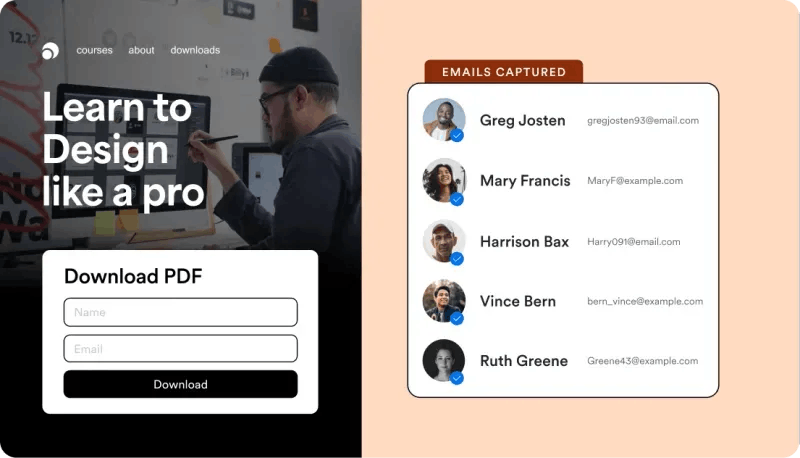
Source: Kajabi
Kajabi's Contacts feature offers a comprehensive CRM tool that helps creators manage customer relationships efficiently. It allows users to organize, tag, and segment contacts, automate customer interactions, and gain insights into audience behavior. The platform enables easy import of contact lists and integrates with other Kajabi tools, which is intended to streamline marketing and communication efforts while keeping everything centralized.
Analytics

Source: Kajabi
Kajabi's Analytics feature provides a comprehensive dashboard that organizes key metrics for a creator’s business, such as revenue, offers sold, and subscription performance. It offers in-depth reports on customer behavior, product performance, and website or page analytics, allowing creators to optimize content and improve customer engagement.
Websites
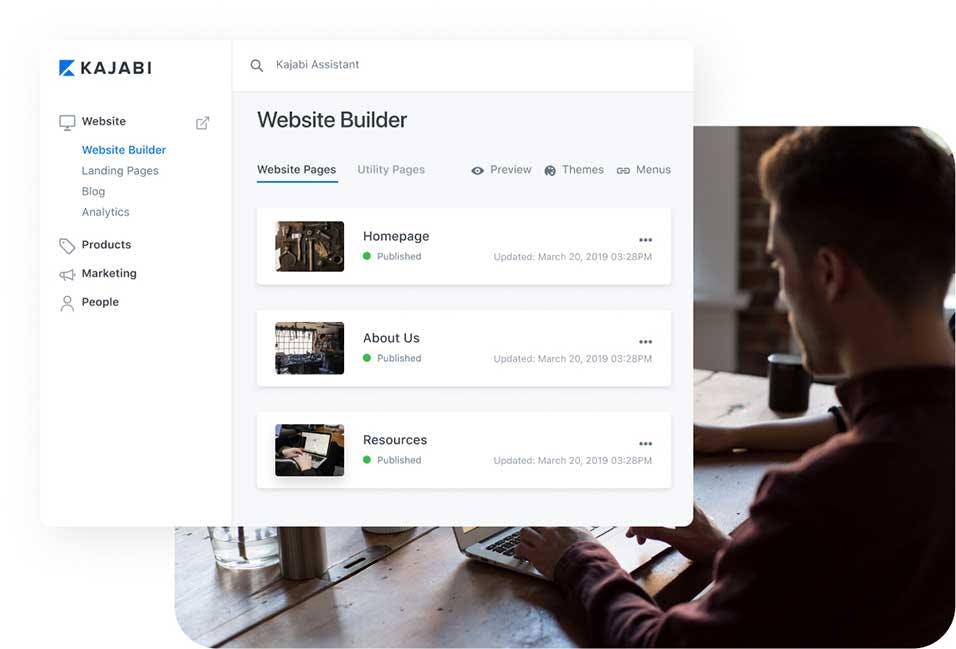
Source: Kajabi
Kajabi's website builder allows creators to create an integrated online hub for their business. It offers customizable templates, drag-and-drop design features, and the ability to use custom domains. It also enables users to showcase products, publish content, and manage everything from one central location without needing design expertise.
Pages
Kajabi's Pages feature allows users to quickly create dynamic landing pages using customizable templates. It offers a drag-and-drop interface, making it easy to design pages without technical expertise. Pages are fully integrated with other Kajabi tools, like marketing campaigns and products, which can help streamline the customer journey from lead generation to conversion.
Emails
Kajabi's email marketing features offer a solution for creating and managing campaigns, with customizable templates, automatic subject line validation, and a visual builder for rich content. It supports both one-time blasts and automated sequences based on customer behavior, all integrated within a platform that includes tools for product creation, website integration, and analytics.
Funnels
Kajabi offers sales funnel software designed to streamline the creation and management of marketing funnels. Users can leverage proven templates for various purposes, such as lead generation and product launches, with pre-written copy derived from high-converting funnels, allowing for quick customization and launch.
Branded App
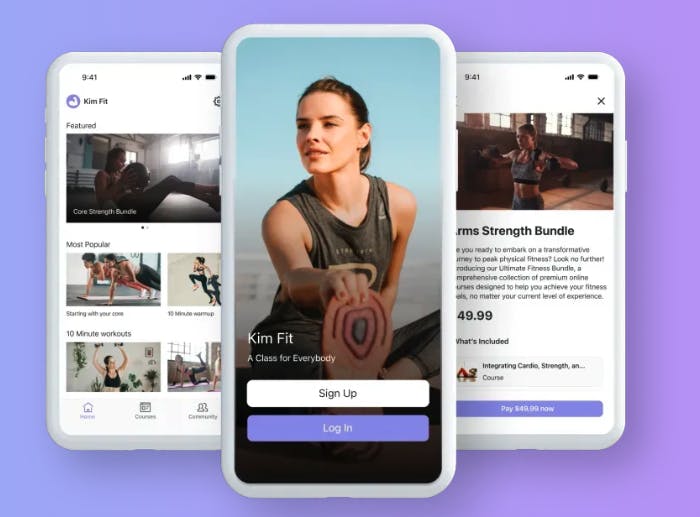
Source: Kajabi
Kajabi's Branded App allows creators to build a customized mobile app featuring their courses and community, complete with their own branding and no Kajabi logos. This white-labeled app is intended to help build brand credibility and provide a seamless experience for members to engage with content and interact with each other.
Key benefits include targeted push notifications that outperform email marketing, in-app purchases for generating revenue, and a unified platform for both courses and community interactions. The app is built and maintained by Kajabi with a setup time of 4-6 weeks. Pricing starts at $89 per month, offering a cost-effective alternative to custom app development.
Creator Studio
Kajabi's Creator Studio is a generative AI tool that repurposes video content into over 40 types of marketing materials, including social media clips, emails, blog posts, and more. Integrated with Adobe Express, it allows users to edit and customize content without design experience. It is intended to help creators build a polished brand, stay consistent across marketing channels, and save time and money by automating content creation. It supports the creation of mini-courses from existing videos and provides tools to enhance audience engagement and conversion. Available with any Kajabi subscription, it offers scalable options for repurposing multiple videos each month.
Creator.io
Creator.io by Kajabi is an AI-powered assistant that is intended to enhance creators’ business operations through four key functionalities: sales support, lead generation, course assistance, and customer support. It helps guide customers to products, engages website visitors via a chatbot, answers student questions, and provides instant troubleshooting. Users can also train the AI with existing content for 24/7 assistance.
Market
Customer
Kajabi serves online creators, which it calls “knowledge entrepreneurs”, who are looking to monetize their following and content. It also serves small businesses such as gyms that want to train their clients online and other consultation-based companies. According to an October 2023 report, the industries that have generated the most GMV for Kajabi include health and fitness ($920 million lifetime GMV), personal development ($770 million), and business finance ($850 million).
The creators of Kajabi mostly have small audiences. As of August 2024, the company has reported that 89% of full-time Kajabi creators have 50K or fewer Instagram followers, while only 5% have over 100K YouTube subscribers and 3% have more than 100K TikTok followers. In 2023, Kajabi claimed that creators earned over $37K a year on average and that one in three creators on its platform made over six figures.
Market Size
In 2022, there were an estimated 50 million creators globally with 2 million of these making at least $100K a year. The remaining 96% of creators earned an average of just $1K. To calculate Kajabi’s ARPU, its revenue estimate of $100 million in 2021 can be used and the 50K creators it announced were on the platform in 2022. This yields an ARPU of $2K and is reasonable to assume since a growth subscription that is billed annually would cost users $1.9K. So, assuming a salary of $100K for top creators and $1K for amateurs, to be conservative, with 2 million and 48 million of each category respectively, implies a TAM of $248 billion for the global creator economy.
Goldman Sachs assumes that the total amount of creators could grow at a 10-20% five-year CAGR and the percentage of professional creators to remain between 3-5%. It estimates a 2027 TAM by taking a 14% CAGR on creator growth rate and retaining the percentage of professional creators at 4%, valuing the market at $478 billion in 2027.
Competition
All-in-One Platforms
Kartra: Founded in 2016, Kartra is a platform to create and market online courses and memberships. There is no available funding data for this company as of August 2024. It is a direct competitor to Kajabi and offers the same products but lacks community management. However, the platform is more expensive than Kajabi, with its plans starting at $99/month, all the way up to $429/month. Its most expensive plan offers funnel analytics, which may be more advanced than Kajabi. However, this might also mean Kajabi is more user-friendly.
Podia: Founded in 2014, Podia helps users sell and market products like online courses, coaching services, webinars, and other digital downloads. Similar to Kajabi, it has a website builder and email marketing tool. However, it lacks the community and membership management tools that Kajabi offers (Kajabi improved this aspect of its business by acquiring the community platform Vibely in November 2022). It's also significantly cheaper, with its most expensive plan priced at $59/month which is comparable to Kajabi’s lowest-tier plan at $55/month. It has raised a total of $3.1 million in funding as of August 2024.
Online Courses
Thinkific: Launched in 2012, Thinkific allows users to create, market, and sell digital content. Like Kajabi, users can build online courses, websites, communities, and branded apps. It differs by having a B2B offering, with customers such as Datadog, Morning Brew, and Stanford University. It has advanced features such as the Plus Portal and Plus API to meet the needs of enterprise customers. In addition, it has its own app store to allow for greater customizability and features.
When it comes to pricing standard offerings are more affordable than Kajabi, with its plans ranging from $36/month to $149/month compared to Kajabi’s plans which range between $55/month and $319/month. However, it lacks the native email marketing and sales funnel tools that Kajabi has. Thinkific went public in April 2021 and has a market cap of $160 million as of August 2024, down from a market cap of over $900 million at the time of its IPO
Teachable: Founded in 2013, Teachable pitches itself as a tool to help creators engage their online audience and get paid on their own terms through courses, coaching, community, memberships, and other downloadable content. Teachable sells the same products as Kajabi. However, it doesn’t have the ability to create sales funnels and email marketing, but its offerings are cheaper, including a free plan. In addition, Teachable’s in-house payment processor charges a 0% transaction fee on Pro plans, whereas users on Kajabi payments must pay transaction fees. It was acquired by Brazil-based online education company Hotmart in March 2020 for $250 million.
Website Builders
Squarespace: Founded in 2003 and taken private for $6.9 billion by Permira in May 2024, Squarespace is a website-building platform. However, it has expanded its product offerings to include online courses and memberships, which overlap with Kajabi. Squarespace has a greater focus on website design tools, whereas Kajabi has a greater emphasis on course creation. Squarespace launched courses much later, in August 2023.
Its pricing is generally cheaper than Kajabi, with its most expensive plan costing $52/month, similar to Kajabi’s starting plan. However, selling courses on Squarespace comes with an add-on cost to its base subscription cost. For example, its starter course plan is an additional $9/month but comes with a 7% transaction cost.
Wix: Wix was founded in 2006 and went public in 2013 with a market cap of less than a billion dollars. Its market cap as of August 2024 was $8.2 billion. Wix is a website builder designed to be intuitive and not require technical experience. In addition to allowing users to create websites, it provides users with e-commerce, scheduling, and digital marketing capabilities. Both Wix and Kajabi offer drag-and-drop website builders and the ability to host online courses, although Wix requires an extension to be installed for it to work. Wix has over 900 templates, access to advanced customization options, and an app market to install more features.
Webflow: Webflow was founded in 2013 and has raised a total of $334.9 million as of August 2024 from investors including Accel and Y Combinator. It was valued at $2 billion in a $140 million Series B in January 2021. Webflow excels in web design flexibility, while Kajabi is tailored for creators seeking comprehensive content creation and marketing solutions. Webflow’s pricing ranges from free to $39/month for its business site plan, which is cheaper compared to Kajabi’s pricing starting at $55/month.
Membership & Communities
Circle: Founded in 2019, Circle is an online community-building platform. It has raised a total of $30.4 million as of August 2024, having raised a $24.7 million Series A in November 2021 at a valuation of $200 million led by Tiger Global.
Similar to Kajabi communities, Circle’s interface is a feed where users can engage in posts and discussions. In addition, creators can host events, live sessions, and even courses on the platform. Kajabi’s differentiation from Circle stems from its suite of native marketing tools like funnel creation and email marketing. However, despite its lack of native marketing tools, Circle has an extensive set of integrations with software like Active Campaign, Mailchimp, and Salesforce.
Patreon: Founded in 2013, Patreon is a membership platform where creators can directly monetize their audience through subscriptions. Its total funding amount as of August 2024 was $413.3 million; it raised a $155 million Series F in April 2021 at a $4 billion valuation.
Both Patreon and Kajabi offer the same community management service, however, Kajabi reportedly has more advanced community management tools like challenges and progress tracking. Patreon has a built-in shop to sell digital products such as images, downloadable files, and videos, akin to online courses. For Kajabi, it’s possible to sell all the same digital downloads but there isn’t a native shop feature built in, requiring users to create a landing page and then an “opt-in form.” When it comes to pricing, Patreon charges a percentage of creators’ income on the platform, from 8% to 12%. Kajabi’s fixed subscription costs could be more advantageous to creators making large amounts of revenue.
Digital Marketing Tools
ActiveCampaign: Founded in 2003, ActiveCampaign is a digital marketing tool for email marketing, sales automation, and customer relationship management. It has raised a total of $360 million in funding as of August 2024, having raised a $240 million Series C in April 2021 at a $3 billion valuation.
Kajabi’s marketing tools are similar to that of ActiveCampaign, however, ActiveCampaign has been able to implement AI throughout the marketing campaign-building process. ActiveCampaign is much more focused on digital marketing and is not a direct competitor with Kajabi, even having a Kajabi integration. However, it could be considered an adjacent competitor.
ClickFunnels: Founded in 2013, ClickFunnels helps users create digital marketing sales funnels. The company was bootstrapped and had grown to $170 million in annual revenue as of July 2024. ClickFunnels started out as just a sales funnel maker but has expanded to allow users to create landing pages, run email marketing campaigns, launch membership and community sites, and even create online courses, similar to the marketing capabilities of Kajabi.
ClickFunnels, however, is more focused on selling digital products and offers advanced features that require custom coding. Meanwhile, Kajabi is more hands-on with the funneling creation process than ClickFunnels and provides users with pre-written email sequences when creating sales funnels while ClickFunnel users have to write them from scratch.
Business Model
Kajabi operates on a fixed subscription model and a variable transaction fee if customers choose to use its payment gateway. Major costs include maintaining its 24/7 live chat feature and continuously running product development cycles in order to stay ahead of competitors. By paying the annual cost upfront, users save 20%. All the pricing below is based on an annual price averaged on a monthly basis.
Kajabi’s Kickstarter Plan is for new creators, costs $55/month, and limits active customers to 50.
Kajabi’s Basic Plan costs $119/month, extends the limit of active customers to 1K, and provides unlimited landing pages and marketing emails.
Kajabi’s Growth Plan costs $159/month. Custom branding and advanced automation are included with this plan.
Kajabi’s Pro Plan costs $319/month and is used once creators are operating at a large scale. It increases the amount of products, funnels, contacts, active customers, and websites. It also includes a custom code editor allowing for greater customization.

Source: Kajabi
Kajabi’s payment gateway charges a standard 2.9% + $0.3 for every sale in the United States and could be considered a transaction cost. However, creators can also use other payment gateways such as PayPal or Stripe (which charges the same amount as Kajabi).
Traction
In October 2023, Kajabi reached $6 billion in GMV, after reaching $5 billion in GMV in March 2023. In November 2021, Kajabi had $4.1 billion in GMV. It aims to reach $9 billion in GMV by the end of 2024.
Furthermore, the platform had over 60K creators as of March 2023 with a total audience of 70 million. From 2015 to 2022, Kajabi was ranked among one of the fastest-growing companies in the Inc. 5000. In October 2023, Kajabi payments had reportedly already processed $25 million in creator revenue, just months after its launch. In 2021, CEO Abad Khan said that the company was making over $100 million in annual recurring revenue.
Kajabi acquired Vibely, a community platform, in November 2021, with the intention of integrating it into Kajabi’s platform as the next iteration of Kajabi’s community product.
Valuation
Kajabi was initially bootstrapped. In May 2021, it raised a $550 million growth financing round which valued the company at over $2 billion, its only funding raised to date as of August 2024. The round was led by Tiger Global Management, along with Spectrum Equity, Meritech Capital Partners, Owl Rock Capital Group, Tidemark, and TPG.
Publicly traded companies most comparable to Kajabi include Thinkific, Udemy, Wix, and Squarespace. Thinkific, Udemy, and Wix have all seen their revenue multiples decline to between 1-6x in July 2024 from a high of between 15-40x in 2021.
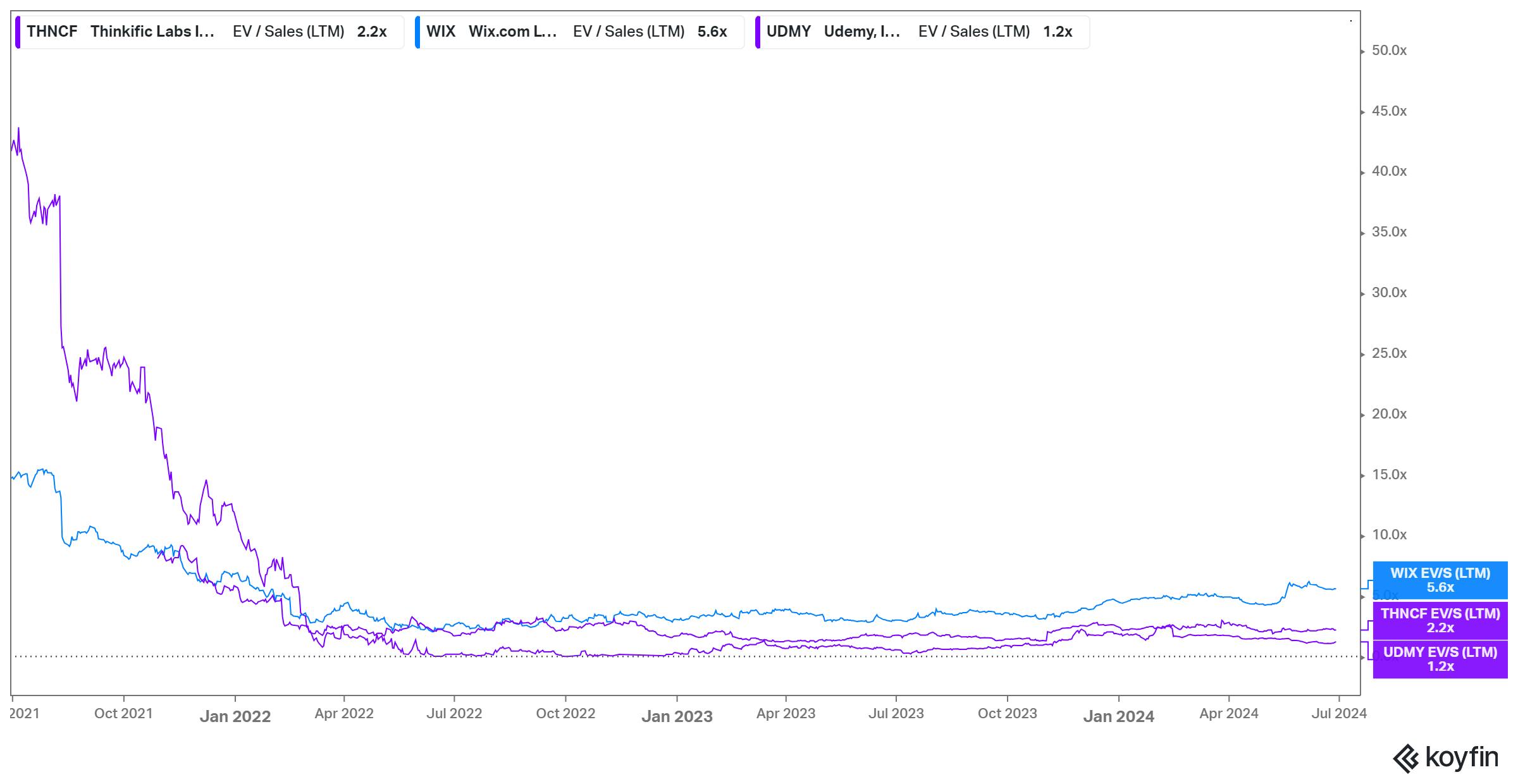
Source: Koyfin
In May 2024, Squarespace was taken private for $6.9 billion due to its underperformance as a public company. The deal valued the company at an implied revenue multiple of 6.3x, whereas the company IPOed at a revenue multiple of 9.6x in May 2021.
Key Opportunities
AI Tools
Creator burnout is common, with 90% of creators reportedly experiencing it in 2021. One of the main culprits for this is the fact that creators are under pressure to constantly be posting new content. With its AI tools, Kajabi has been able to save time for creators and potentially reduce burnout. Kajabi claims that its AI creator studio reduces time spent on marketing by 90% and saves entrepreneurs 20 hours a month. In addition, it conducted a 2024 survey which found that 56% of creators think AI tools are one of the best ways to reduce burnout. If Kajabi is able to continue to improve those tools, it may be a significant value-add for users going forward.
Product Expansion
A key way that Kajabi retains its users is through its ability to offer a comprehensive solution for creators, helping eliminate the technical barriers of integrating different platforms while also reducing the overall cost creators spend on software. This may help increase lock in by increasing the costs of switching away from the platform since creators would need to find multiple new tools to replace Kajabi. Product expansion through the development of new products, or through acquisitions such as its Vibely acquisition in 2021, could help it differentiate and retain users while justifying a price point that is higher than some of its competitors.
Key Risks
Robust Competition
Kajabi positions itself as a comprehensive platform, which helps enable it to charge a premium for its services. However, competition is increasing as online course platforms make plugins more powerful and website builders launch native course creation tools. In addition, website builders have expanded their offerings to tap into the online course market. Squarespace and Wix both launched the ability to create online courses natively. Shopify integrated with Thinkific in 2019 to allow customers to directly host Thinkific courses on their Shopify sites.
Furthermore, a former Kajabi employee who was still with the firm in 2020 claimed that the company was starting to lose the “war of features and products,” leading to the launch of Kajabi’s 8-week product development cycle in order to stay ahead.
Kajabi’s core offering of creating websites and hosting videos may not be hard to replicate while consumers pay a premium for its product. It has attempted to differentiate itself by providing a comprehensive platform, implementing useful AI tools, and having easy-to-use templates in order to lower technical barriers. However, integrations between different platforms and the increased number of competitors could hurt margins if it faces pricing pressure while also needing to increase R&D costs to improve features. Furthermore, churn could increase due to its premium pricing and the availability of alternative platforms.
Creator Financial Difficulties
The increasing numbers of creators globally mean more competition, making it harder for many creators to earn a living. In March 2023, Kajabi claimed that the average Kajabi creator was making $37K/year. According to a former Kajabi employee, 3% or less of creators were making six figures. If Kajabi creators start to see less revenue on average as the number of creators increases, Kajabi’s premium might no longer be worth it when there are cheaper alternatives.
Furthermore, 59% of creators cited the difficulty of “making a living” as a main reason for burnout. Kajabi’s demographic is mostly small creators, and 48% of creators in 2023 made less than $15K. If creators have a harder time making sales due to competition and they aren’t making enough to sustain themselves, it could lead Kajabi to experience elevated churn going forward, with creators switching to a cheaper platform or quitting altogether.
Summary
In 2023, the global creator economy, valued at $250 billion and projected to reach $480 billion by 2027, comprises around 50 million content creators who have increasingly sought alternatives to brand sponsorships for monetization. Initially reliant on sponsorships, creators are now using platforms like Kajabi to sell products and offer subscriptions. Kajabi, founded in 2009 by Kenny Rueter and Travis Rosser, enables creators to monetize through online courses, coaching programs, and community-building tools. As of late 2023, Kajabi had achieved $6 billion in GMV and aimed for $9 billion by 2024, with a valuation of over $2 billion from a 2021 funding round.
